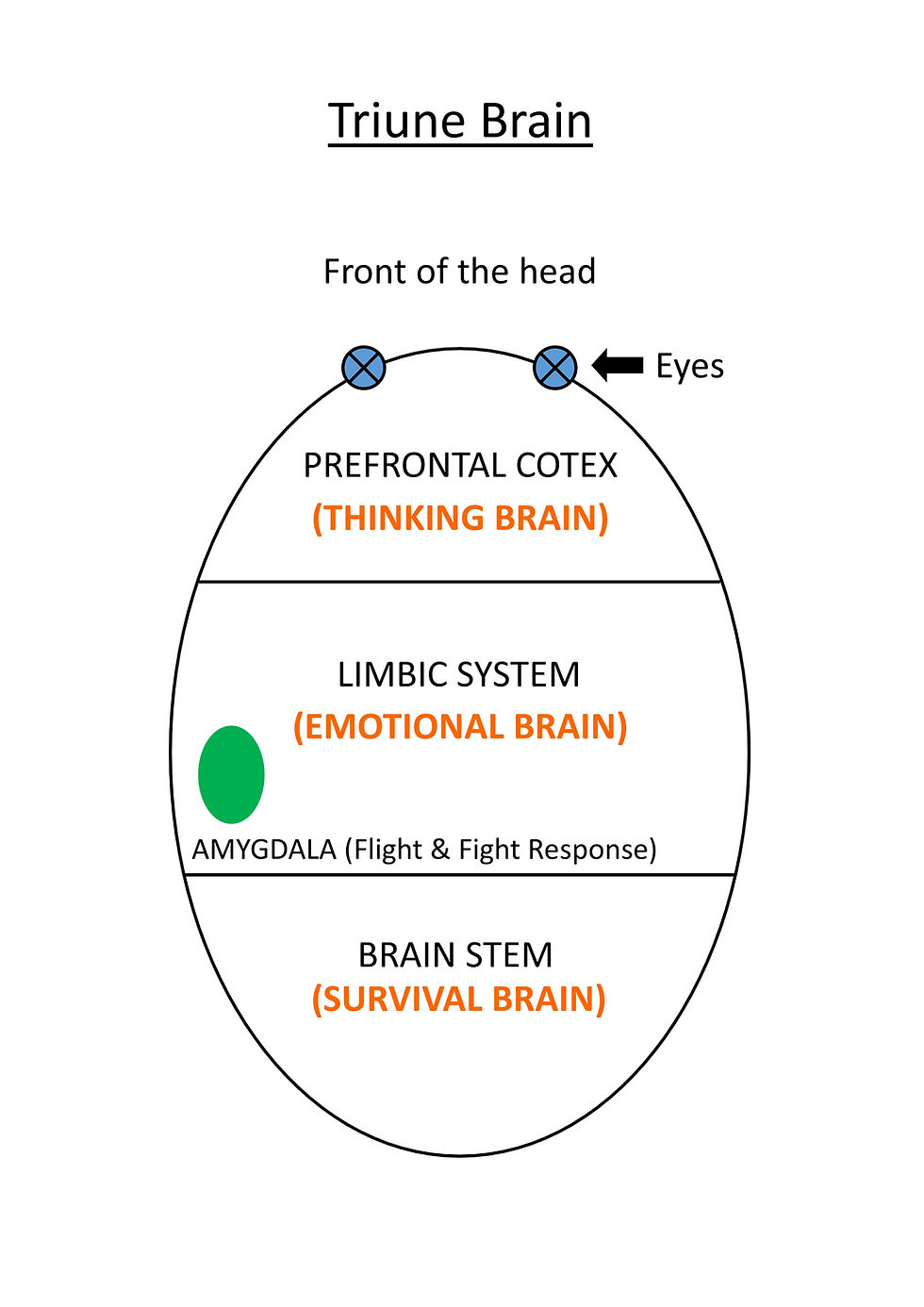Triune Brain in Psychotherapy: The Parts (Part I)
- Lemuel Tan
- Jan 30, 2020
- 3 min read
Updated: Mar 12, 2020
The Triune Brain is a brain model created by Paul D. MacLean in the 1960’s that explains the evolution of the vertebrate’s brain. I like the model because it is simple to understand and it can be easily explained to most clients. This is especially true once you relabel the brain's “scientific names” to easy to understand names. It is called the Triune brain as it describes three distinct parts of the brain functioning as one. The three parts are:
Brain Stem – This part is responsible for basic survival functions, heart rate, breathing, body temperature. Fun fact - This is also called the “Reptilian Brain” because most reptilians only have that part of the brain. We call this part the “Survival Brain”.
Limbic System –This part is responsible for non-verbal emotional, relational experiences, ‘gut’ feelings and memories, sense of belonging, attachment, and etc. A particular interest within this part of the brain is the Amygdala that manages our “flight or fight” responses. We call this part the “Emotional Brain”.
Prefrontal Cortex – This part is responsible for complex decision making, abstract thought, creativity, imagination, verbal expressions, problem solving, reasoning and etc. We call this part the “Thinking Brain”.

We know that the brain grows in a sequential manner (one step at a time) and it is thought that the Survival Brain was the earliest and most primitive part of the brain. Once the Survival Brain is developed, we then develop our Emotional Brain and lastly our Thinking Brain. This is why we do not expect children to behave, talk and rationalise like grown adults because their Thinking Brain is still in development.
When an individual experiences a major threat, the Survival Brain and Emotional Brain start lighting up. The Survival Brain, without you realising, starts working actively to keep you alive by increasing your heart rate, breathing, body temperature, etc., while the Emotional Brain, specifically the “Flight or Fight” response (from the Amygdala) starts activating- Should I run or should I stand and fight? All the energy to keep you alive gets diverted into these two parts of the brain resulting in the reduction of the Thinking Brain's capacity. Sometimes in therapy, I call this experience as “the Thinking Brain going off-line”. This is why it is hard to make a clearly thought out decision when someone is under a lot of stress.

In neuro-science (the science of neurology), there is a saying that “if it (neurons) fires, it wires”, meaning that if you have an experience, the neurons in your brain become activated, creating connections between other neurons (neurological pathway). The more it fires, the stronger the neurological pathway becomes. If this regularly happens, the sensation would be one of “automation”, Example – “I don’t know why I am scared, I just am!”, “I feel a sense of on-going worry, paranoia, etc.”, “I always feel numb”, etc. Having a stronger neurological pathway is not the same as being hardwired. We know from a different part of neuroscience the concept of neuroplasticity (or plasticity for short). Neuroplasticity means that the brain has the ability to continuously change throughout an individual's life. Like a plastic, this means that the brain can be moulded and reshaped. Every time we learn a new skill, it produces a change in our brain- new neurological pathway gets laid. However, each time we forget a skill, the brain registers this as well- resulting in the neurological wiring being degraded. Plasticity gives us hope that we can undo the unhelpful wiring that has been automated from the past traumas.
In a future post, we will explore the importance of the integration of the whole brain and what happens when a brain is not integrated.
Disclaimer: The material on this blog is not to be used by any commercial or personal entity without expressed written consent of the blog's author. The article above is an opinion of an individual clinician and should not be taken as full clinical advice. The statements on this blog are not intended to diagnose, treat, cure or prevent any mental health or mental illnesses. Always consult your doctor for medical advice or seek professional therapy.




Comments